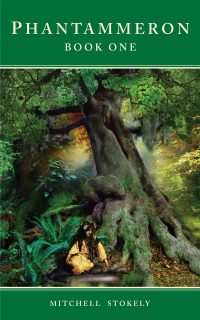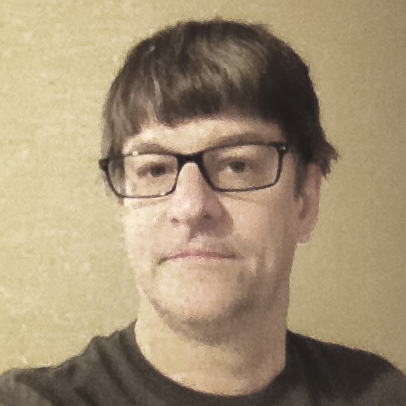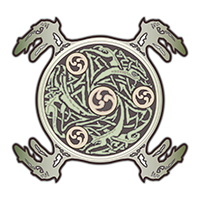In writing the main characters for Book One of the Phantammeron, I had chosen a young girl named Ana to be the central protagonist. She had always been the girl that would come to represent the main theme in the early books, as well as the archetype of Water and the source of the magical pool that would come to live in the lands called Phantaia in my novels.
As I’ve mentioned, the first novels cover the history of a Heaven or Paradise of the Fay or faerie that will appear in later novels. As such the first novels will cover the creation of my worlds, and how they came to be and not be later.
But writing about heaven and its birth and tragic end is a heavy lift for any writer. And so I have tried to portray my Creation Myth in these early books with as much Modern story-telling craft as possible, while not losing the religious, mytho-poetic style needed to convey the latter concept. And that is what Ana was designed to do…..drift between those two worlds.
In Fantasy we often use Protagonists to connect with the reader and their sense of themselves in their struggles and redemptions. But Ana was not that to me. She was simply a symbol…a shell of a girl whose only purpose was to release the Sacred Waters into a spring in the earth.
At the end of the first book Ana realizes the waters in her heart given her by her mother were destined to be planted in a deep well in the earth. At the end of Book One, she dives into this well atop the mound called Abra and perishes. But not entirely…..
For when Ana dove into the well, the roots of the One Tree gripped her body, comforting her fall, and delivered her to a tomb where her body was laid to rest, entangled in the roots of the One Tree deep underground.
There in deep repose, half-dead, half-Dreaming, Ana lay resting for all eternity, as the waters from her heart flowed forth into the tomb, rising up through the well and into a Sacred Pool on the hill high above her grave.
The One Tree in all it shining white grandeur then blossomed forth with new life at the end of Book One, feeding off her waters, and rebirthing the forest that had been destroyed. And so the fantasy paradise called Phantaia was reborn with new life, flowering forth from the waters Ana now sustained alone. She thus became its “Earth Mother”.
And so the Myth of the creation of the Sacred Pool was achieved in Book One.
This myth is strange, not real, dreamlike and almost not believable. I intended it to be that way. For the Myth of Ana became a part of the fabric of the much larger Mythology that would build in all my books. For protagonists don’t live in my writing. The myths live to replace them so that their stories derive meaning from some other place.
And that is what my work is about and what Ana became – simply Mythopoeia.
Ana lives now “beyond” the surface of story, beyond even the books. She’s a hero, maybe. But in reality she’s an archetype…of the Eternal Feminine, of Indo-European symbols of water and life that still live in Modern Western Culture and Religions, of woman as giver of the waters of life and yet of the eternal mask that her archetype forever wears. That was what I intended her tragic tale to convey, unconsciously.
For the Myth of the masculine and paternal lives as well in my novels; conquers, and then dies in my stories. But the feminine lives on to rebirth the world as in all ancient Western Myths, over and over and over again. Our fairy tales portray her that way, from virgin, to mother, to hag….and then virgin again. And so she is that very “cyclical” thing in my stories, you will see. She is the cycle of the year and the seasons, but of life itself on Earth that is eternal and never dies.
But that is not all she is or what women are to me. There are many more archetypes yet to be shown for men and women in my novels. No it’s not stereotyping, just as portraying men as hero’s is not type-casting men as such. Mythopoeia is the use of characters and people as much more than the sum of their roles in story. Its these roles that Modern Fiction has continued to use that has stereotyped us all. But through myth we can cut through what they truly are in our culture and in our minds.
For we too in this world like Ana are symbols to others yet complex types as well. We are roles like they, but something beyond our social contacts and culture in private as well. We too can go beyond our families, our career, our roles and be hero’s.
But beyond heroes we also are spirit, are archetypes to others, and symbols in history we cannot control. We are truly part of a much bigger play we cannot quite grasp.
Just look at any famous person that has died. Do you know their true selves or do you cherish more the heroic things they said, did, or created while alive? This is the magic of our minds at work in culture and myth and faith. This is part of the fabric of culture and life and how we not just love and relate, but how we interpret the greater world of people and things we do not know or see but still feel connected to.
And this is how Ana in my books becomes more real than real….for she is not just a girl that finds love with a boy in a fairy tale story, then dies. She is a symbol of something universal in all of us…the Waters of Life inside our souls that must be rejuvenated and reborn, as we struggle to live in this complex, demanding world. She is the child inside me, and in you, that is pure and has died so we all might see the world with aged but renewed eyes that help us survive and love life in a deeper way through wisdom and patience and love that grows within over time.
For Life is truly a fairy tale where like Ana we too are but actors on a limelight stage. And inside our minds we must cope with this strange mystery and Life’s many unknowns, protecting the Waters of Our Own Life and the child inside us that hides us from the challenges of an overly aggressive and often insensitive world.
We all have an Ana that sleeps inside our inner gardens and who gives us life. And that is one of the many secrets to my characters that I intended to show my readers in writing her story.
But though my characters are symbols of myself and of cultural and historical archetypes, they yet are a small part of my much larger tale that uses these characters for its grander purpose.
For she is but the beginning of something larger; a larger Mythology of men, women, and creatures that I will portray through poetic words and events as I connect them all to a much larger story yet to come. For their purpose is to live freely in my book’s cosmology, and cherish their lives in my books. But so too were they designed to lead you down the rabbit hole towards a deeper meaning in my novels, down into the many mysteries behind the Phantammeron yet to be revealed.
– Mitchell Stokely



